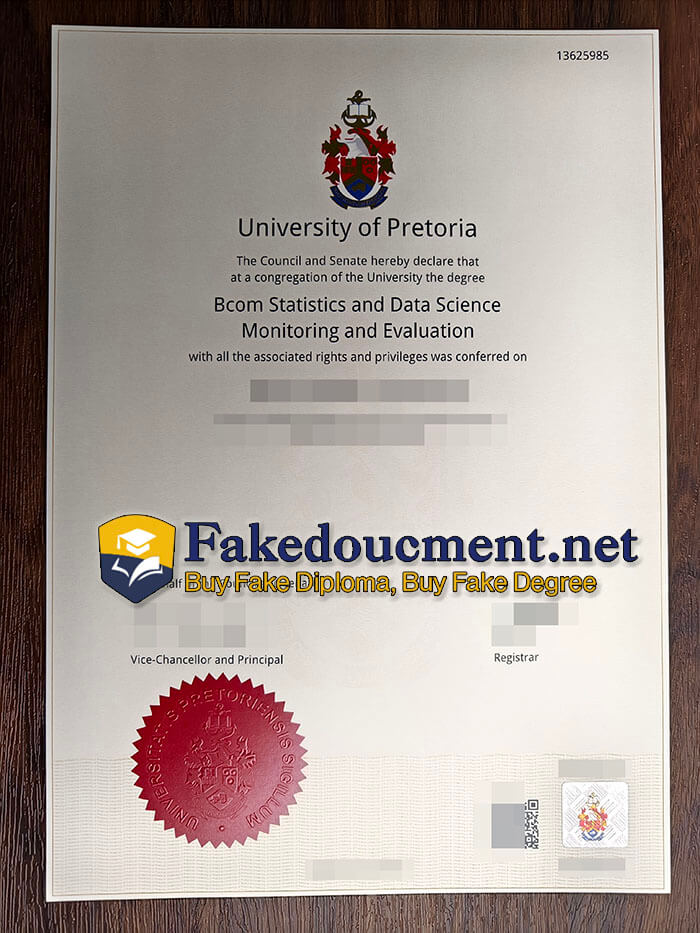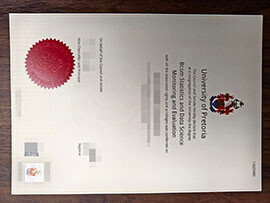
Where to order fake University of Pretoria degree certificate online? I would like to buy a realistic University of Pretoria diploma certificate online, Buy high-quality University of Pretoria degree certificate online. The University of Pretoria is a public research university located in Pretoria, South Africa. It was established in 1908 and is one of the largest universities in the country. The university offers a wide range of undergraduate and postgraduate programs in various fields, including humanities, natural sciences, engineering, business, and health sciences.
The University of Pretoria is known for its research capabilities and has produced numerous groundbreaking studies in various disciplines. It is also a member of the Association of African Universities and the Association of Commonwealth Universities.
The proposal for a university for the capital, first mooted in the Volksraad in 1889, was interrupted by the outbreak of the Anglo–Boer War in 1899. In 1896, the South African School of Mines was founded in Kimberley. Eight years later, in 1904, the school was moved to Johannesburg and was renamed the Transvaal Technical Institute. The school’s name changed yet again in 1906 to Transvaal University College.
In 1902, after the signing of the Peace of Vereeniging, the Normal College for teacher training was established in Groenkloof, Pretoria. On 4 March 1908, when the Transvaal University College (TUC) transferred its arts and science courses to its newly established Pretoria campus, the precursor to the university was established, initially offering courses in languages, sciences, and law.
Instruction commenced with 32 students, 4 professors and 3 lecturers in the Kya Rosa, 270 Skinner Street a late Victorian residence purchased from Leo Weinthal the then owner of The Press (forerunner to the Pretoria News newspaper). The first four professors were H. Th. Reinink (Dutch), J. Purves (Scottish), D.F. du Toit Malherbe (South African) and A.C. Paterson (Scottish), who would also become the first vice-chancellor.
In 1910, the colonial secretary, General Jan Smuts tabled the act constituting the university as a separate entity before the Transvaal Parliament, the “Transvaalse and Universiteits-Inlijvingswet” Law 1 of 1910. On 17 May 1910, the Johannesburg and Pretoria campuses separated, each becoming an independent institution. The Johannesburg campus being reincorporated as the South African School of Mines and Technology, while the Pretoria campus retained the name of Transvaal University College until 1930.
The South African School of Mines and Technology would later go on to become the University of the Witwatersrand in 1922. In 1910, the TUC acquired its own campus in the east of Pretoria, what is now the western part of the university’s main campus in Hatfield. On 3 August 1910, Governor-General Herbert John Gladstone, 1st Viscount Gladstone laid the cornerstone of the Old Arts Building, the first building to be built on the newly established Hatfield campus.
The building’s striking Cape Dutch and Neo-Romanesque architectural style was recognised in 1968 when it was declared a provincial heritage site. During this time the colloquial name for the university, Tukkies or Tuks, was derived from the Afrikaans acronym for the college, i.e. Transvaalse Universiteitskollege (TUK).
The late 1910s and early 1920s saw the establishment of several faculties as the academic activities were expanded. Courses in agriculture (1917), theology (1918), economics and political science (1919), veterinary science (1920), and music (1923) were established as the institution grew.






